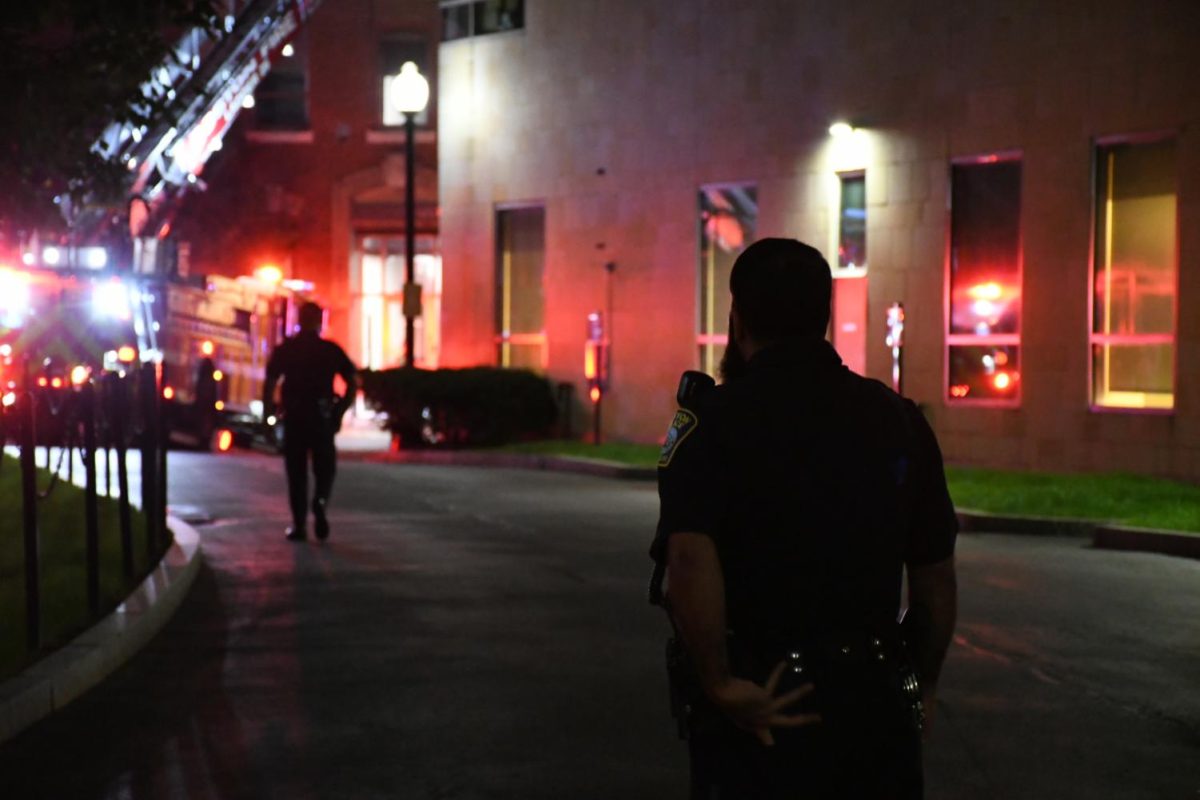
By Raffaela Kenny-Cincotta, News Staff
The U.S. Department of Education (DOE) released a new College Scorecard for the nation’s colleges this week. Compared to other Boston-area universities, Northeastern did not rate well. But students and university officials said the scorecard model does not account for some of the school’s benefits, namely co-op.
Instead of presenting college tuition prices at face value, the DOE’s college scorecard takes into consideration monetary aid given to students that lessens the load of tuition payments, like grants and scholarships.
Compared to Harvard University, Boston College, Tufts University, Emerson College, Suffolk University and Boston University, Northeastern is the only institution with an estimated annual cost greater than $30,000.
Jane Brown, vice president of enrollment management, said the scorecard presents “a very incomplete picture” because it lacks a statistic on job placement, which many consider to be Northeastern’s greatest strength. On the Scorecard website, there is a section for alumni employment, but the data hasn’t been released yet.
“What families are not getting is the value of their investment considering the cost of a Northeastern education,” she said.
“More than 90 percent of our students are working full time or in graduate school six months after graduation … 87 percent of those students who are working full time beyond graduation, nine months out, are working in jobs that are related to their major.”
A Boston Globe on Feb. 19 article singled Northeastern out as a high-cost school.
“I would be very surprised if every trustee has not gotten a copy of the [Boston Globe] article,” Law Professor Richard Daynard, who heads the Faculty Senate Agenda Committee, said. “It’s clearly high visibility.”
Brown said “the university is aware of this information and was not just made aware of it,” and that combating high tuition cost is “an area Northeastern has been working on for some time.” She said the university has committed $188 million to financial aid over the past year.
A striking scorecard comparison can be made between Northeastern and Harvard. According to the DOE, Northeastern’s adjusted estimated annual tuition is $32,493, while the Ivy League school across the Charles River costs almost half that price, at $18,277.
Daynard said the comparison between tuition at Northeastern and Harvard is not a question of price, but rather of how the general wealth of each university reflects on the scholarship opportunities provided to students.
According to US News and World Report, Harvard has a $32 billion endowment, compared with Northeastern at $601 million as of 2011.
“I can’t imagine if there’s any university, certainly not Northeastern, that wouldn’t love to be able to [be that generous]. But, Northeastern doesn’t have a lot of endowment,” Daynard said.
Brown furthered this point, saying Northeastern simply does not have as large an endowment as Harvard.
“We at Northeastern don’t have the kind of resources that you would have at a Harvard or a Yale,” she said.
But Brown noted the university’s commitment to increasing financial aid due to an awareness “that many families cannot afford the sticker price.”
“We are accelerating the financial aid increase over the tuition increase,” she said. “So the net price over time is coming down.”
In addition to the DOE tuition estimates, The National Center for Education Statistics (NCES), which according to its website is “the primary federal entity for collecting and analyzing data related to education,” has conducted its own comprehensive studies on the cost of universities across the nation.
The NCES website reports that tuition at Northeastern has been steadily increasing for the last four years. Compared to the 2009-10 rate of $35,712, the NCES calculated 2012-13 tuition at Northeastern to have raised by almost $5,000, with an estimated cost of $40,086.
Compared to the 2011-2012 tuition, the current cost of NU has been raised 3.8 percent. The NCES also observed that the price of room and board at Northeastern has become more expensive as well, with a 2012-13 estimate of $13,140 compared to $11,910 in 2009-10.
The NCES documented that the average net price of a year at Northeastern for students coming from the lowest income bracket ($0 – $30,000) increased from $20,430 in 2009-10 to $20,587 in 2010-11. This low-income group and the next lowest, students whose families earn between $30,001 and $48,000, were the only two groups to see a hike.
Students from the wealthiest bracket, whose family earned an excess of $110,000 a year, experience a drop of $461 in the same time frame ($37,954 in 2009-12, $37,493 in 2010-11).
Similar to the DOE scorecard, the NCES statistics were determined by “subtracting the average amount of federal, state/local government or institutional grant or scholarship aid from the total cost of attendance.” The total cost was reached by combining the standard tuition cost with the price of books, room and board, as well as other standard fees and expenses.
Student Body President Pete Petrin, in an interview with The News, described the rising prominence of college costs as a national issue.
“I think that’s an interesting part of the narrative that [President Barack Obama] built during the State of the Union,” he said. “They really talked about using value and affordability as part of the metrics of how colleges are ranked. And I think that’s something that’s incredibility important. I think it’s something that’s probably been undervalued in the past. And I think that’s something that, especially if it’s on the national level and really something that is a top priority in the field of higher education, that I would expect the university to respond to.”
Petrin said he was eager to see the university’s response to the scorecard and added that the Student Government Association (SGA) is “well aware that cost is a major issue for students.” He noted SGA’s annual budget priority survey, which has the goal to “make sure any tuition increases or investments the university is making each new year are focused around student priorities and reflective on what the needs of the campus are.”
Determining the value of an education is a difficult issue, Petrin said.
“I think one thing that this alludes to that’s really tough to judge is value,” he said. “And that’s something that we at student government, most of what we do is try to focus on maximizing that value for students. Making sure that the investment we make in our education and our future pay off for us.”
At Northeastern, Petrin agreed with Brown that it is especially difficult to assess cost and benefits.
“It’s tough to say that we cost this much, but at the same time we have students making $25,000- $50,000 during their five, six years at Northeastern through co-op, through working full time,” he said. “So at the same time we also have that higher capacity to pay for our education, to pay for our cost of living.”
Nicholas Waters, a third year biology major, echoed Petrin’s stance.
“I think that if you look at the price [on the scorecard], it’s outrageous if you don’t consider the guarantee of employment that co-op offers,” he said.
Freshman journalism major Sarah Schwarz said the availability of financial aid softened the blow for her in deciding to come to Northeastern.
“I would say that out of all the schools I applied to, Northeastern was the one that gave me the most money even though it was the most expensive,” she said. “So I guess I would say that in my experience, for the quality of education Northeastern provides, they definitely make ways for tuition to be more reasonable.”








